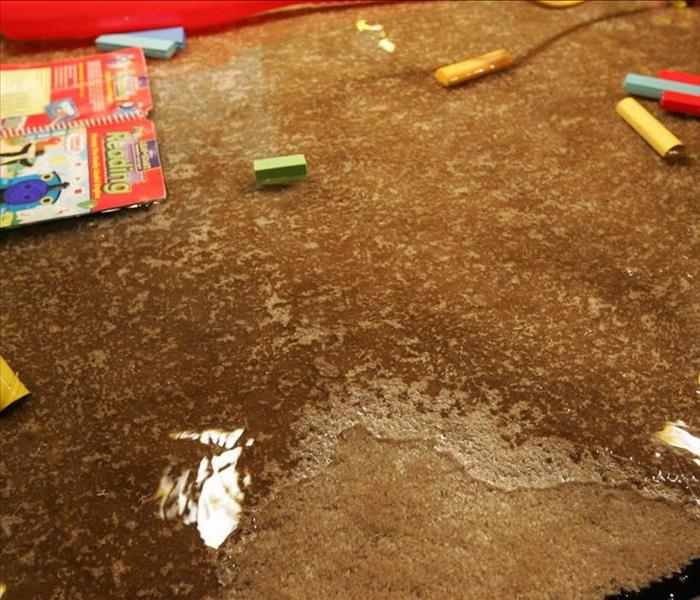Flood Clean Up Tips For Homes And Businesses
6/7/2017 (Permalink)
Rising water is one of the gravest and frightening problems that a business or homeowner may face, and the resulting flood clean-up is both costly and time-consuming. It is a scary prospect watching floodwaters creep slowly toward the home or office. If high water makes an incursion, severe damage and a horrible clutter of muck, debris, and germs may follow. Acting quickly after the water recedes can decrease the damage and perhaps make some possessions and furniture salvageable. Even carpet may be restorable, depending on the extent and the type of the flooding. Unfortunately, many electronics exposed to the water are typically considered a loss. Don’t take water damage lightly. Even if the area only had an inch of water, or is just damp, it can become the ideal situation for mold growth within days. Mold may contaminate walls, carpet, furniture, and flooring. It can lead to breathing issues including asthma, and severe illness.
Below are some useful flood clean-up tips for home and business owners. Most of the tips are interchangeable. A word of warning, if any mold is suspected, it is earnestly recommended to engage the services of an IICRC-certified mold remediation specialist rather than attempting clean-up.
Clean Up Tips for Homeowners
- Before going into the house to begin flood clean-up, check for downed power lines, gas leaks, foundation cracks, or other obvious problems.
- If power lines are down near the home, avoid puddles or standing water at the very least. Although calling on professional help is the best way to avoid electrocution.
- Be on the lookout for wild animals, including snakes. Floodwaters tend to uproot them from their natural areas, and it is possible that they have entered the home or are in the general vicinity.
- While cleaning up, wear protective gear such as boots and rubber gloves.
- Waterlogged cleaning products, paint, batteries, and fuel are contaminated and considered hazardous. Find out from the local authorities the best method for disposing of these items.
- Discard food items and drinking water if it has come into contact with the flood waters. This includes canned goods and bottled water. Follow the maxim: When in doubt, throw it out!
Flood Clean Up Tips for Businesses
- Disconnect the power - Unplug electric devices and remove them if it is safe to do so. Remove furniture and loose items from the space as soon as possible. The sooner they are out of the water, the better the chances of restoring them. Pull up any carpets and under-padding.
- Remove the water - If there is no power, use towels, buckets, and mops. If power is safely available, then a wet/dry vacuum may be employed. Note: Be very careful with electricity, and if unsure of whether the building is safe, call in a certified professional.
- Dry out the flooded area - Once the water is gone, use airmovers and a dehumidifier to dry out the area. Open windows for air circulation. Exposed wood may be salvageable, but exposed drywall will likely have to be replaced.
- Disinfect - A disinfectant will help to kill bacteria that may be present.
- Inhibit mold growth - After applying a disinfectant, apply an anti-mold spray to the area while wearing a mask for protection. If mold is obviously present, it is best to hire a certified mold remediation company.
- Dispose of damaged items - Check with the city’s waste management department to find out where to recycle chemicals such as paint and other toxic liquids, as well as electronics. A dumpster can be dropped off for non-toxic materials. Make sure before disposing of damaged items, that your insurance claims representative has had a chance to see them or at a minimum, document all damaged items with multiple photographs.
Flood clean-up after high water ravages a home or business is typically a burdensome and demanding task. It may also involve some danger, so safety concerns must take precedence. Some guidelines should be followed to ensure the security of the clean-up crew and to ensure that restoration is efficient and thorough.
Source: http://www.IICRC.org/flood-clean-tips-for-homes-and-businesses-a-564.html


 24/7 Emergency Service
24/7 Emergency Service
